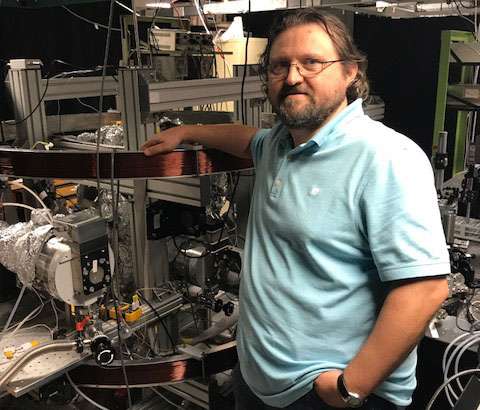Electron caught in the act

Australia's fastest camera has revealed the time it takes for molecules to break apart.
The experimental research, conducted by Griffith University's Centre for Quantum Dynamics, aims to help in the design of new molecules for materials science or drug discovery.
The Centre is the only place in the country to have the machine in its Australian Attosecond Science Facility.
Research published in Nature Communications shows how scientists can measure, in real-time, the time that it takes and the separation distance of two atoms when the bond is broken in the simplest diatomic molecule.
The result in an astonishing 15 millionth of a billionth of a second at a distance of half a billionth of a metre.
The research was led by Associate Professor of Physics Igor Litvinyuk and conducted in collaboration with theorists from Shanghai Jiao Tong University.Associate Professor Litvinyuk said the molecule was made of two protons and one electron which they shared.
"That electron sharing is responsible for the chemical bond which binds the protons together to form the molecule," he said.
"We made that molecule dissociate and observed how soon the electron would 'decide' at which proton it will remain. That is called 'electron localisation' or loss of sharing and it signifies a breakage of a chemical bond".
Co-author Professor Robert Sang, Dean (Research) Griffith Sciences, said there was a fundamental interest in how molecules behaved.
"This allows us to start thinking about how we might engineer a new molecule and is a stepping stone towards looking at that type of reality, particularly in areas like drug discovery," he said.
"It's pretty amazing you can do measurements on this sort of timescale. We can even observe processes which are faster than that."
More information: H. Xu et al. Observing electron localization in a dissociating H2+ molecule in real time, Nature Communications (2017). DOI: 10.1038/ncomms15849
Journal information: Nature Communications
Provided by Griffith University



















